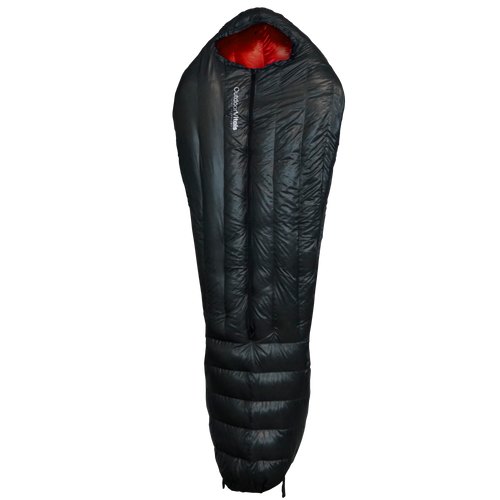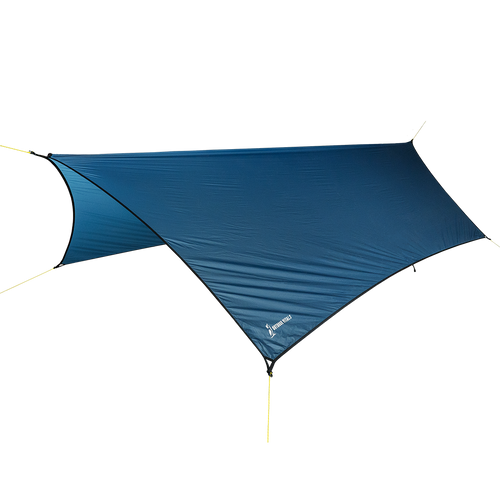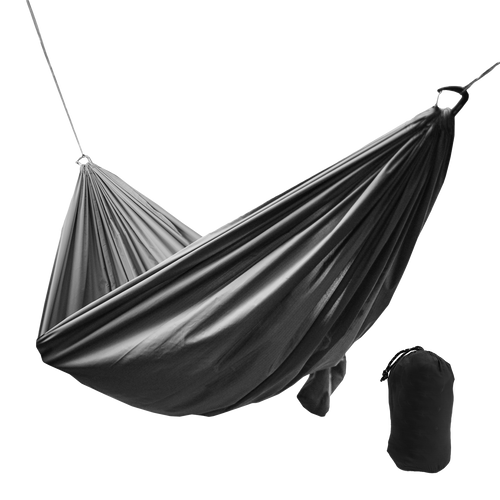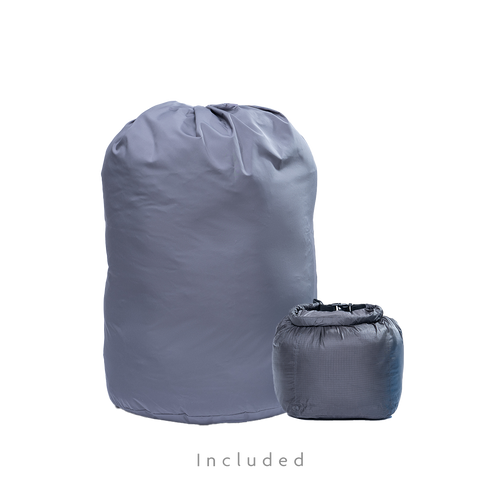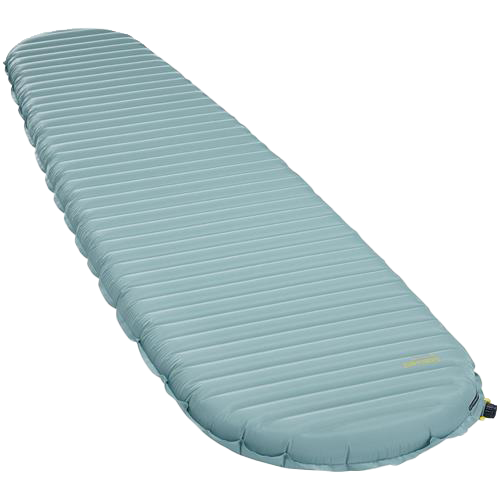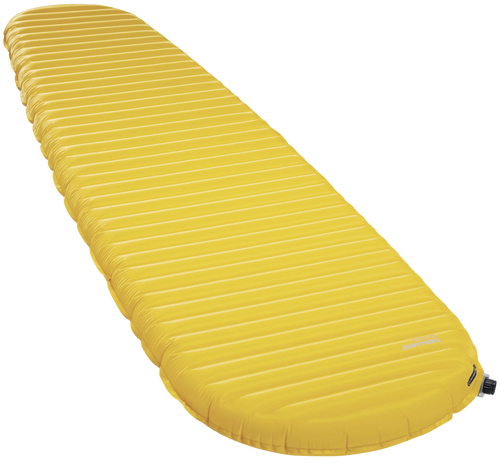Avoid This Major Backpacking Food Mistake...
Today, I want to share something I've spent years dialing in & figuring out for myself. It's the biggest mistake I ever made regarding backpacking food, & you are definitely going to want to avoid it!
Understanding Calories Per Ounce
Before I reveal my top tip for backpacking food, let's discuss a fundamental concept: calories per ounce.
You've likely seen a lot of Cliff Bars on the trail. On the packaging, you’ll find that it weighs about 68 grams and contains 250 calories.
Now let's break that down into calories per ounce.
For quick reference, roughly 30 grams equals an ounce, so 68 grams is about 2.4 ounces. Dividing the 250 calories found on the back of the package gives us around 100 calories per ounce.
Not particularly impressive, right?
Many seasoned backpackers recommend high-calorie foods, like almond butter, which boasts about 180 calories per ounce.
And there are a lot of similar options out there that are both lightweight & full of calories.
Naturally, you might think, "Load up on these calorie-dense snacks!"
But that's where I went wrong—I often felt sluggish and fatigued halfway up a mountain.
The Importance of Personalizing Your Diet
Over the years, I've realized the importance of understanding my body and how it reacts to different types of fuel.
Sometimes, I practice intermittent fasting, which makes my body more efficient at burning fat. On other occasions, my body craves constant energy from regular meals.
This understanding has been crucial for my backpacking trips.
I recall a backpacking trip earlier this summer where we climbed about 3,500 feet in just a few hours. I felt great initially, but as I neared the top, I hit a wall—headache, exhaustion, and no energy. After a quick break and some sugary snacks, I felt revitalized and continued on my journey.
The Three Categories of Backpacking Food
To make things easier, I’ve categorized backpacking food into three groups:
-
Quick Sugars: Dried apples, fruit snacks, and gummies. These digest quickly and provide an instant energy boost. For most people, these are a great thing to eat while on the move in order to keep energy levels up.
-
Carbohydrates and Proteins: Items like whole grains and legumes that offer more sustained energy. These are great for main meals and help keep you fueled longer. Most people should typically be eating a lot of these throughout the day as well.
-
High-Fat, High-Protein Foods: Almond butter and nuts fall into this category. While nutritious, they can be heavy and may lead to nausea if consumed in large quantities without the right balance.
I've gone out on the trail & tried to eat a couple cups of trail mix or a couple cups of nuts and I finish about one cup of it & then I'm just toast - like I feel like I'm going to throw up & just can't consume anymore.
Foods in this category can take a bit more time to digest, so I've found that they are better to eat at meal times rather than when I'm on the move.
A Balanced Approach
From my experience, it's crucial to have a variety of foods from each category.
If I only pack high-fat snacks, I might find myself running out of energy too quickly. Conversely, if I rely solely on quick sugars, I risk crashing later on. Again, I typically save the high-fat options for meal times, allowing more time for digestion before hitting the trail again.
Freeze-Dried Meals: A Game Changer
Now, let's touch on freeze-dried meals.
These are essential for long trips. I recommend trying different brands before your adventure.
There are SO MANY great freeze dried meal options out there - Peak Refuel, Alpen Fuel, Readywise, Packit Gourmet, and more.
A lot of these brands I've mentioned use better ingredients with less fillers, and make a HUGE difference when it comes to helping you feel good & enjoy food on the trail.
Sometimes it's not worth just going with the cheapest option.
BUT there are ways to save on these better meals.
If you join the Live Ultralight Membership, you can access the OV Pantry & get a discount on any meal PLUS store credit cash back you can put towards other gear (or more food.)
It's one of the cheapest ways on the internet to get some of the best prices on the best backpacking food.
Final Thoughts
In conclusion, the biggest takeaway is to test your food options and recognize your body’s needs.
Don’t just follow generic advice about what to eat on the trail.
Understand your eating habits and try to replicate them in the wilderness. If you head out with a diet that doesn't align with what your body is used to, it's likely you won't feel very well, especially during strenuous activities.
I hope these insights help you plan better for your next backpacking adventure.
See you on the trail!
7 comments
All good advise.
As a physician I marvel at how people tend to overcomplicate things. We need sugar for activity especially the type you speak of—3,500 feet in a few hours—whoa! Hold the fiber and micronutrients for camp and eat good old fashioned sugar in any form you want on the trail. Your body and mind will thank you.
This was good! I appreciate a lot of what you guys say. My husband and I are slower hikers but spend about 5-6 days on the trail but only trucking about 40 miles in that time. I’ve been eating mostly animal for the last 2 years and finding freeze dried meals to aline with that are hard especially if I want grass fed and pasture raised like I do on my farm. I’ve dried some food and it’s okay but I’m not pleased with my results except for dried salmon, so good! My husband does the meals like you offer and actually I’m getting a membership for us because it would save us some money 🙃 Anyways, do you have any brand suggestions that do mostly animal products? I know there are egg things out there but if I do too many cooked egg yolks I feel sick. I will also say my energy levels have been amazing since I started this, less pain on the trail and I keep getting older, only thing I’ve changed is the food I eat regularly. Any suggestions will be appreciated! I can only eat so much jerky, ha!
I’d be interested to know what those on a Keto diet do for their daily nutritional and energy needs while on trail.
After a lifetime of hiking and 8,000 miles of long trails and typical high processed “hiking” foods my body revolted and I was forced to go back to carrying mostly real food. Less sugar, salt, less chemicals, dyes, etc., is BEST. Do what you can on your budget but keep in mind that it’s your temple, treat it good. Cause you will pay later if you do not.
Thanks for the great article on something as simple but oh so important as food.
Like you mentioned each person is different in their metabolism . Mine functions best on Protein.
For me one of the best trail snacks is Tuna and Salmon packets . High in protein very palatable and the energy derived is over the top.
M and M’s are another good snack as the Peanut in them buffers the high sugar rush. I would stay away from a lot of simple sugars like Gummies and Candy . They give a sugar high but you crash later on.
I mostly carry a Cocoa bar with mostly very little sugar but high in chocolate.
Consuming Nuts,Almond butter ,Bacon ,Sausage,Cheese is best done at base camp at the end of the day.When we Winter camp we pack peanut Butter, Cashews, Pepperoni ,Sausage and pre cooked bacon. All four high in Fat and those fat calories keep you warm. Just look at the Reindeer herders in the Great far North.
Also those energy shots work well for me . I just watch out for products too high in Caffiene. Honey Stingers are very good.
Pralines have been a new discovery for me for daily hiking energy. Lower in Fat with a smooth buttery taste they are easily consumed.
For my drink of choice on the trail it’s mostly water but for breakfast I like those Tang shots and of course Coffee. For your Coffee avoid those powdery milk products. They seem to raise your BP and are not good for your cholesterol.Ive found Bustello instant to be the closest thing to real Coffee beans.
Another good trail snack is Granola . It’s got a little sugar and some carbs to buffer the sugar.
Hope this helps.
This article does a good job of covering some macro nutrient basics. It ignores micro nutrition, which is a mistake for multi day hikes. Micro nutrients, including fiber, are vital for peak health and athletic performance. This is why we need to avoid empty calories like sugar, processed grains and animal products, all of which are empty calories because they contain calories, but very little micro nutrition.

